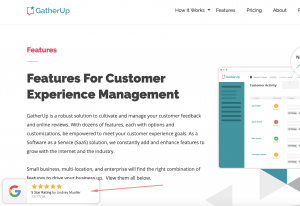Take a dual approach for success, setting top-down and bottom-up goals.
As we step into a new year and quarter, marketing operations teams face the perennial challenge of setting new annual goals that are both ambitious and achievable. Goal setting for marketing operations teams isn’t just about hitting numbers but crafting a roadmap for growth and innovation. When setting goals, Marketing Operations teams should consider crafting different sets of goals for two audiences: your public goals, which will be shared with your marketing and sales partners, and your team’s internal goals, which will only be shared within your MOPs team.
Approach your MOps with a “product management” mindset
When creating your goals, it’s important first to understand if your Marketing Operations (MOPs) teams have adopted a “Product Management” mindset. This product-first approach involves thinking of your marketing operations team and platforms as a product, continuously evolving to meet the needs of your organization and customers. By doing so, you can create a more agile, responsive, and effective MOPs function. One way to adopt this type of mindset is by building a roadmap of planned work for your MOPs team, broken down into monthly sprints. Jessica Kao recently highlighted the success she’s had with this approach on the RevOps podcast.
Designing Monthly Sprints for Continuous Improvement:
- Monthly Sprints. Just like a software product, your MOPs should be developed in monthly sprints. Each sprint should focus on delivering specific features and capabilities that align with your overarching goals.
- Capability Building. Each sprint should not only aim to achieve immediate goals but also build capabilities that lay the foundation for future initiatives. This approach ensures sustained growth and adaptation of your MOPs.
- “Quick Wins” = Rapid Prototyping and Feedback Loop. Implement a rapid prototyping approach. Roll out beta versions of new features or improvements, gather feedback, and iterate. This process enables you to refine your operations continuously and adapt quickly to new insights or changes in the market.
Once your team has adopted the approach of building a roadmap around monthly sprints, you can start to align both of your sets of goals around that roadmap.
Why two sets of goals?
There are many different types of goal-setting frameworks and methodologies, but at a fundamental level, goal-setting usually falls into two approaches: top-down or bottom-up. The top-down approach is often led by upper management and passed down through the hierarchy of the organization, with each subsequent level of management aiming to align their goals with the organization’s overarching objectives and vision. Think of your public goals as your “top-down” goals.
On the other end of the spectrum, “bottom-up” goal setting is led by employees at lower levels of the organizational hierarchy. These goals are often more practical and immediately relevant to the “on-the-ground” challenges of daily operations. Think of your internal team goals as your “bottom-up” goals.
Public “top-down” goal setting
When planning your public goals, talk to your internal stakeholders about what their objectives are for the year, map those objectives to what capabilities your MOps team requires to deliver against those objectives, and then break each capability down into what “quick wins” you can deliver for that stakeholder. For example:
- Stakeholder objective: Increase sales in the automotive sector by 5%.
- Marketing operations capabilities: Sales enablement, personalized content, lead management.
- Long-term vision: Inbound and outbound multi-channel campaign targeting the automotive industry.
In the example above, the long-term vision might be to launch a holistic multi-channel campaign targeting the automotive industry. But that might mean developing new lead management and personalization capabilities within your MAP platform that you know could take six months or more to build out. But if you go back to your stakeholders and tell them that you need six months to build those capabilities out, they are going to be frustrated and view the MOPs team as a roadblock to achieving their goals rather than an asset that can help them win.
So, how can you break those capabilities down into smaller “quick wins” to satisfy your internal partners that you’re supporting their objectives? Identifying quick wins is critical, and you can often measure their success in a binary way -did they launch or did they not? That’s the type of product-focused, “rapid prototyping” mindset that can help your team plan each monthly sprint. Deliver a quick win each month while continuing to work on the long-term capabilities in the background.
Month 1. Create an email template that the sales team can send on their own to their automotive prospects.
Month 2. Build upon that single email template to launch a three-email “nurture sequence” that sales can enroll their automotive prospects into.
Month 3. Launch a webinar targeting the automotive industry.
Month 4. Launch paid search and landing page.
Month 5. Etc., etc.
Communicating these monthly accomplishments to your internal stakeholders is vitally important to keep them engaged and supportive of your team. How you choose to communicate it might vary — it could be in a monthly email or one-pager, but the most important aspect is to show that your team is delivering value quickly and consistently.
That consistency is going to build confidence in your team from your stakeholders and ultimately buy you more time to not only improve upon the substance of these “quick wins” to deliver more full-fledged capabilities within your platforms but, perhaps even more importantly, it will provide the goodwill necessary to give your team the space to continue to advance your own internal goals.
Dig deeper: Megan Michuda: Spotlight on the expert
Internal “bottom-up” goal setting
When thinking about the goals that you set for your internal marketing operations team, you want to think about what success really means for your team. Success in these terms might not be the traditional metrics that initially come to mind for a marketing operations team, like “increase marketing qualified leads.” Instead, true success may be things that are harder to quantify but are more impactful to your team’s day-to-day work.
Success in these terms might be things like:
| What success looks like | How do we know we’ve achieved this? |
| Marketing Operations is viewed as a strategic partner | MOPs are included in upfront planning meetings consistentlyThe CMO regularly includes bullet points about the MOPs teams’ progress in their own goals and status updates |
| Decreasing the number of urgent requests that come to the team | Track your team’s work by tickets, hours, story points (etc.)… what percent of work is urgent? What percent are “ad hoc” requests vs planned work on your roadmap? |
| MOPs team members have time for professional development | Create a list of skills or topics the team wants to develop, and keep track of what activities have been done to improve knowledge in those areas (webinars or conferences attended, free product trials to test, etc.) |
| We build the necessary documentation around systems and processes that always get put to the backburner | List out the documentation that needs to be created, and regularly schedule updates/reviews to keep it up to date |
These types of goals take time to show progress against, and therefore, reviewing progress against them every quarter will make more sense than a monthly cadence. At the beginning of the year, schedule these quarterly reviews with your marketing operations team and hold the team accountable for reviewing the goals that you set and the progress that you’ve made against them.
Each quarter, you can assess if these are still the right goals and the right priority for your team and also develop tactics and plans for how you can make more progress against them.
As we embrace a new year, the importance of taking a strategic, structured approach to goal setting is critical to enhancing the reputation of MOPs across your organization as well as fostering a sense of accomplishment and motivation within your team. This type of goal-setting strategy ensures that MOPs teams are not just operational backbones but also key contributors to strategic initiatives and growth.
The post Mastering the art of goal setting in marketing operations appeared first on MarTech.
MarTech(4)






